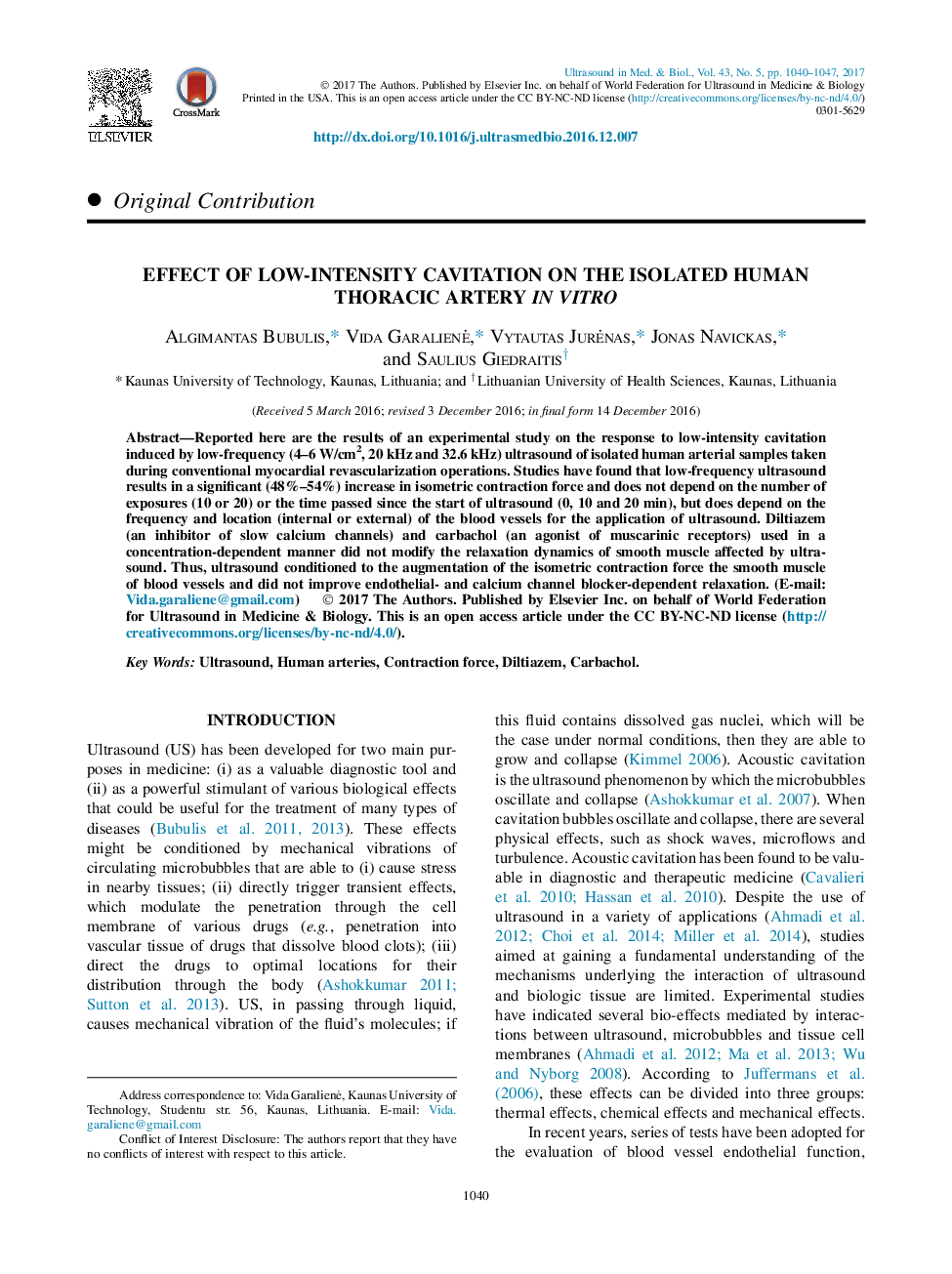| Article ID | Journal | Published Year | Pages | File Type |
|---|---|---|---|---|
| 5485959 | Ultrasound in Medicine & Biology | 2017 | 8 Pages |
Abstract
Reported here are the results of an experimental study on the response to low-intensity cavitation induced by low-frequency (4-6Â W/cm2, 20Â kHz and 32.6Â kHz) ultrasound of isolated human arterial samples taken during conventional myocardial revascularization operations. Studies have found that low-frequency ultrasound results in a significant (48%-54%) increase in isometric contraction force and does not depend on the number of exposures (10 or 20) or the time passed since the start of ultrasound (0, 10 and 20Â min), but does depend on the frequency and location (internal or external) of the blood vessels for the application of ultrasound. Diltiazem (an inhibitor of slow calcium channels) and carbachol (an agonist of muscarinic receptors) used in a concentration-dependent manner did not modify the relaxation dynamics of smooth muscle affected by ultrasound. Thus, ultrasound conditioned to the augmentation of the isometric contraction force the smooth muscle of blood vessels and did not improve endothelial- and calcium channel blocker-dependent relaxation.
Related Topics
Physical Sciences and Engineering
Physics and Astronomy
Acoustics and Ultrasonics
Authors
Algimantas Bubulis, Vida GaralienÄ, Vytautas JurÄnas, Jonas Navickas, Saulius Giedraitis,
